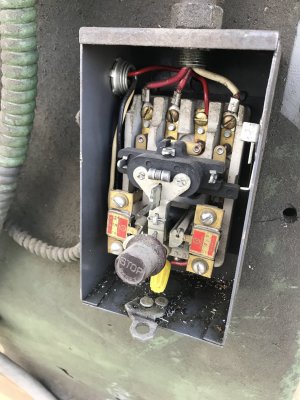- Joined
- May 27, 2016
- Messages
- 3,471
Leaving out information to limit your question in the hope of a binary Yes/No answer greatly increases the chances of the question being moot. You will only really feel OK when switching on if you have got enough from the folk here to understand the motor, and it's connections to the extent you feel confident.Can a motor, wired to the 3 phase input in what a typical diagram would consider "Low Voltage" actually be expecting 480 volts? Do those motors exist? If the simple answer is "no" - then I can worry about the causes when I need to.
When a motor has six windings, the (many) ways they can commonly be used is always potentially complicated.
I definitely go +1 on @strantor 's "With 95% probability: no" except I would change the percentage to 99%.
We have pretty much got there on everything about what it is, and how to connect it. It should not take very much more to check it out, and find out why it acts as it does. Probably, you don't even have to take it apart any further than taking the connections off. If you find something wrong, then open. If it's something simple, then fix it. You will have a good powerful working thing with a long life, and you will understand everything about it. If you find its a wreck inside, then by all means replace it.
Your nameplate image is not clear enough to see the motor power (HP?), but from multiplying the voltage by the current for both cases, we get 1276Watts, or 1.7 horsepower. It may be rated 1.5HP, allowing for efficiency, and phase lag.
I sense you wanted a quick fix, and you are reluctant to open it regardless.
OK then, if you are considering a replacement, get a 2HP motor with the same shaft for your pulley.
Note: A brand new one might still come with the "how do I connect it" questions!
Regardless whether new or nicely fixed up, if you also get a VFD, it will have you smiling, and you won't even need the rotary converter



